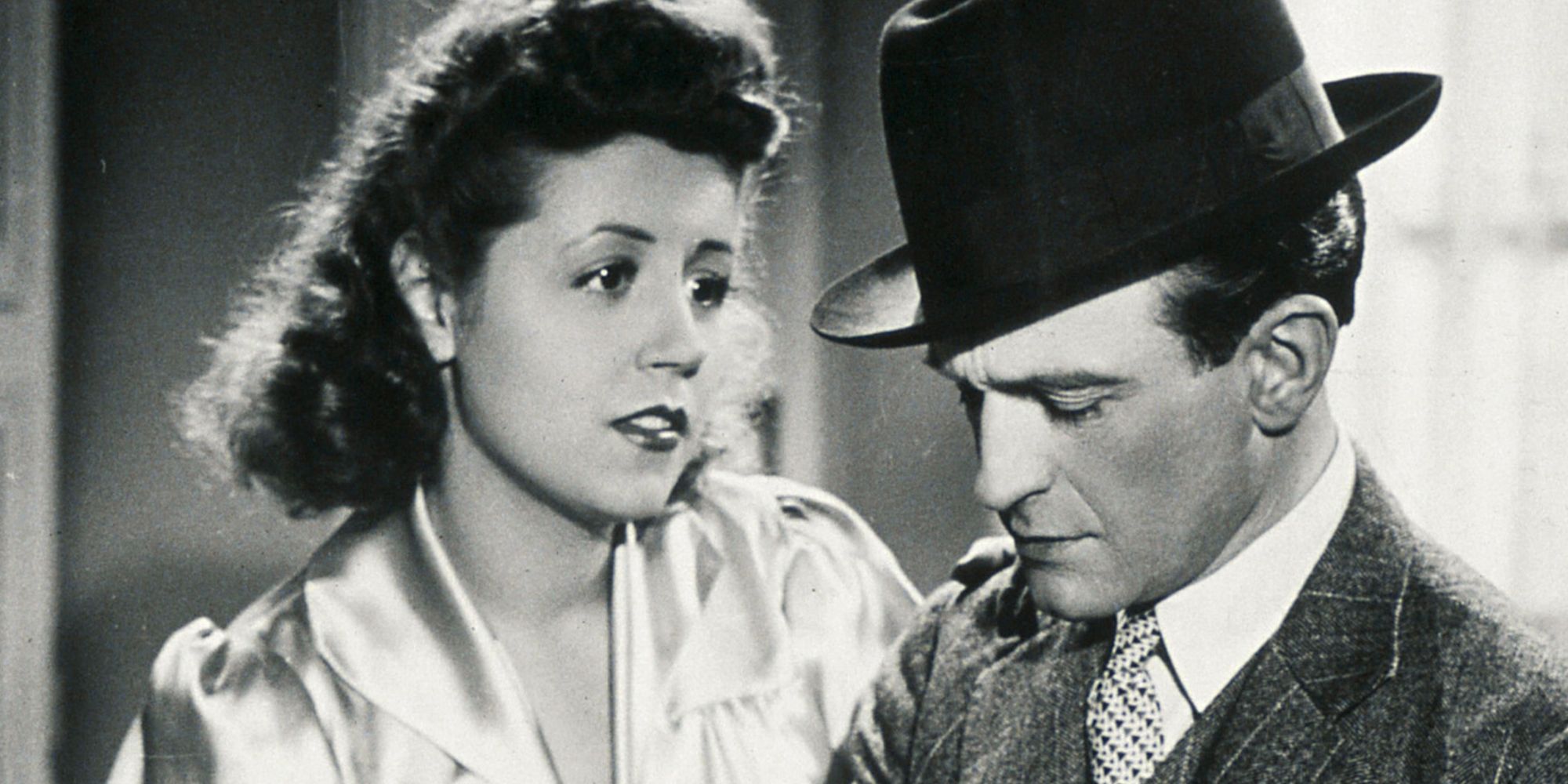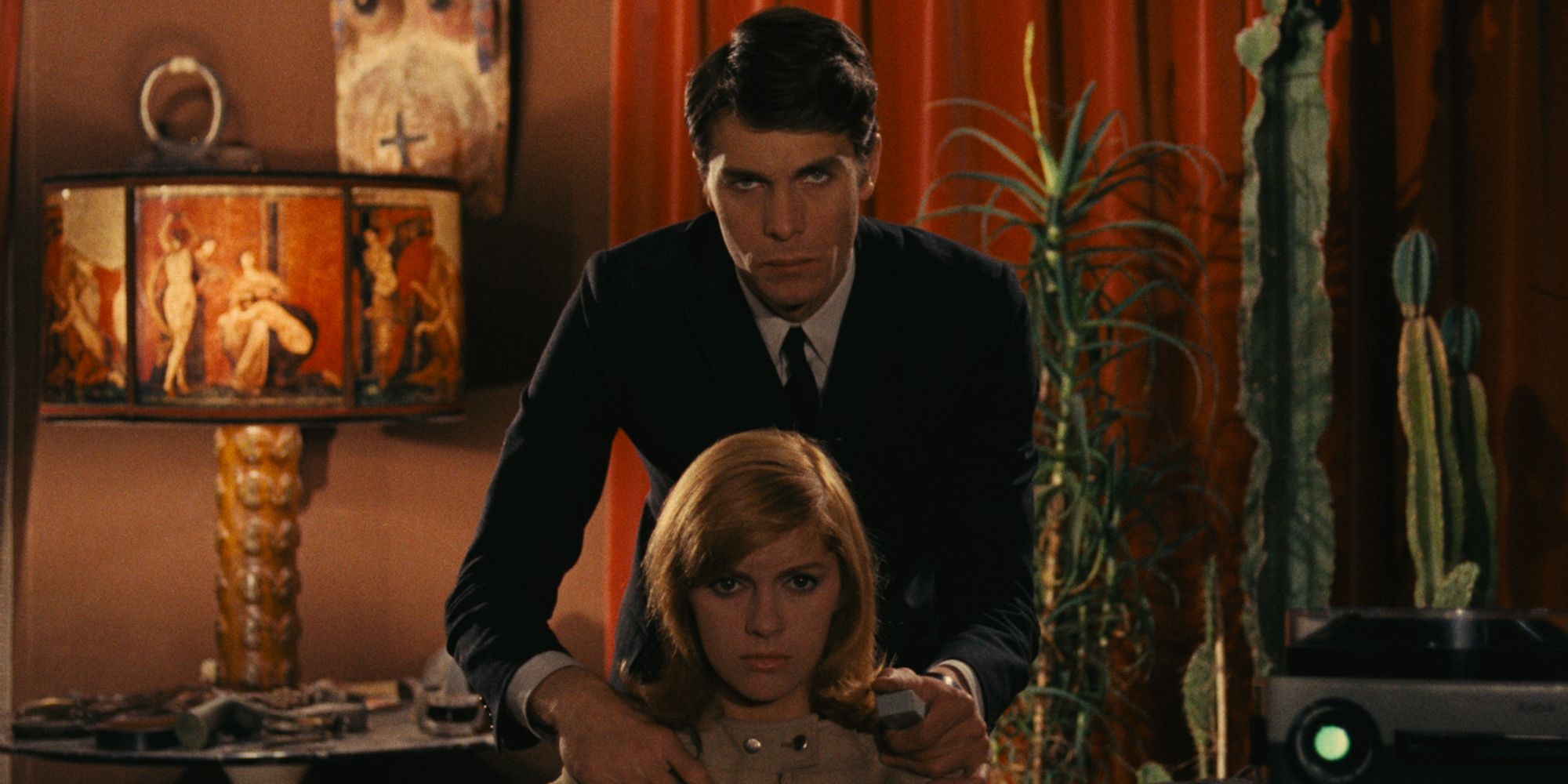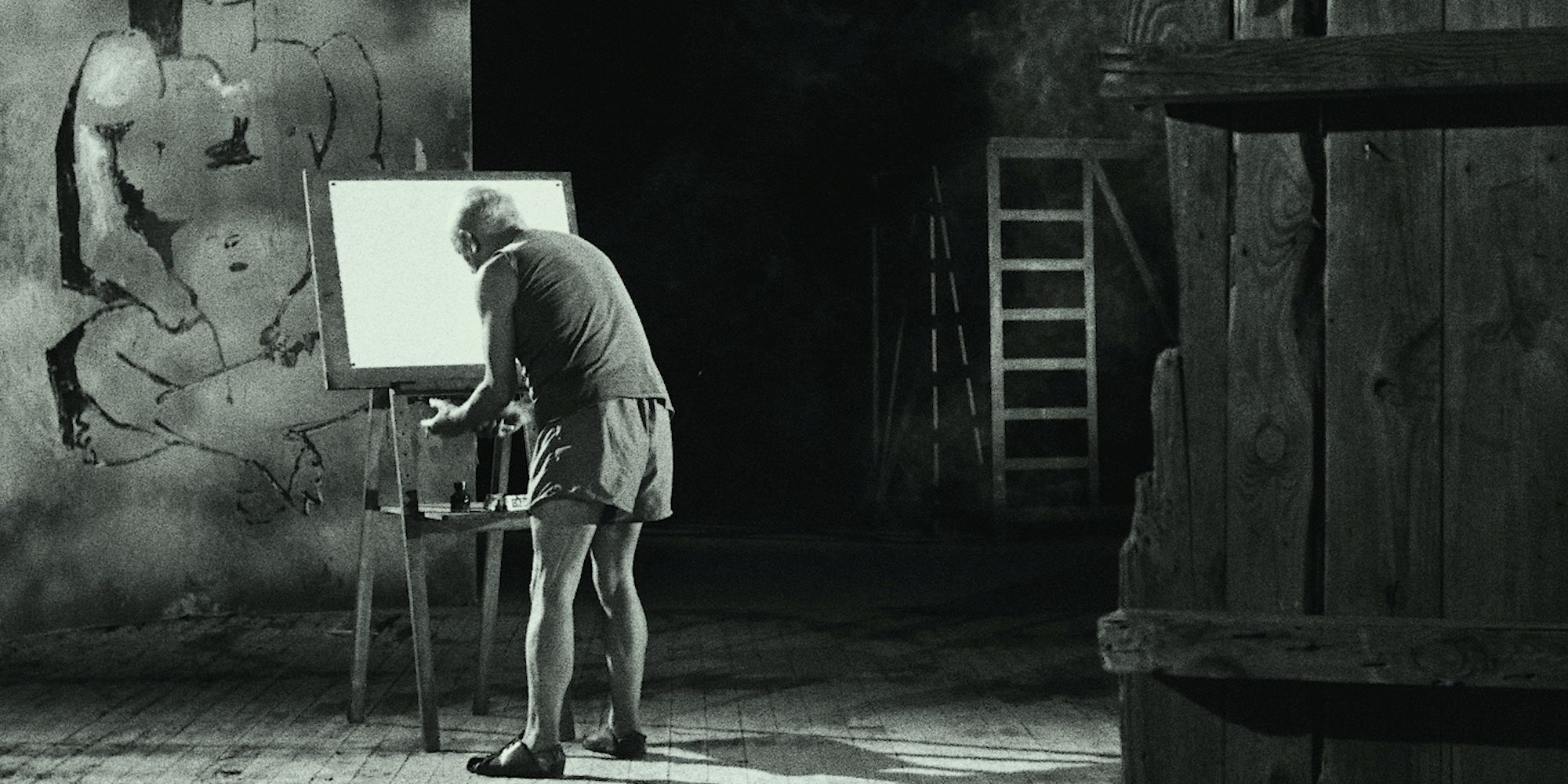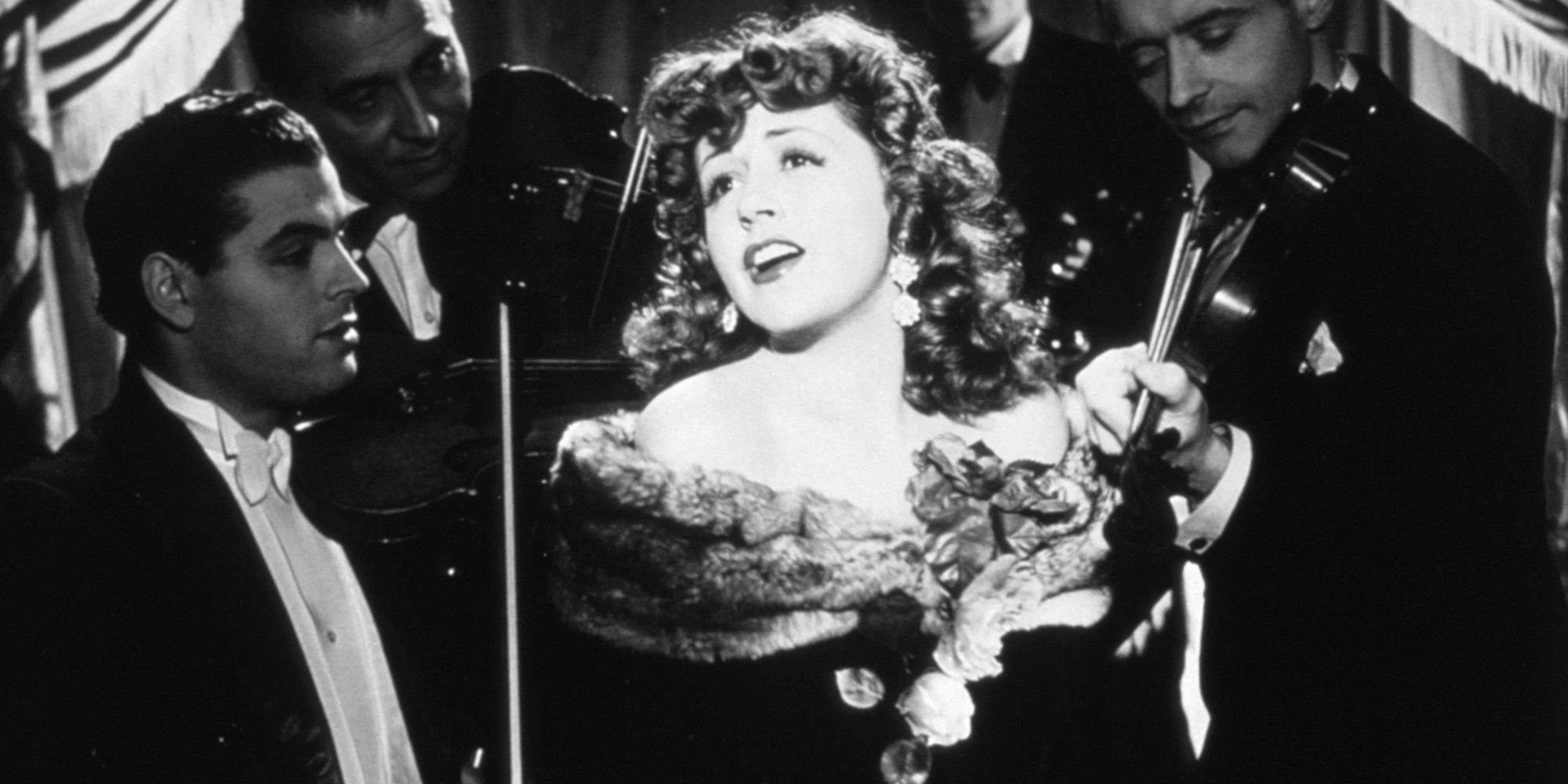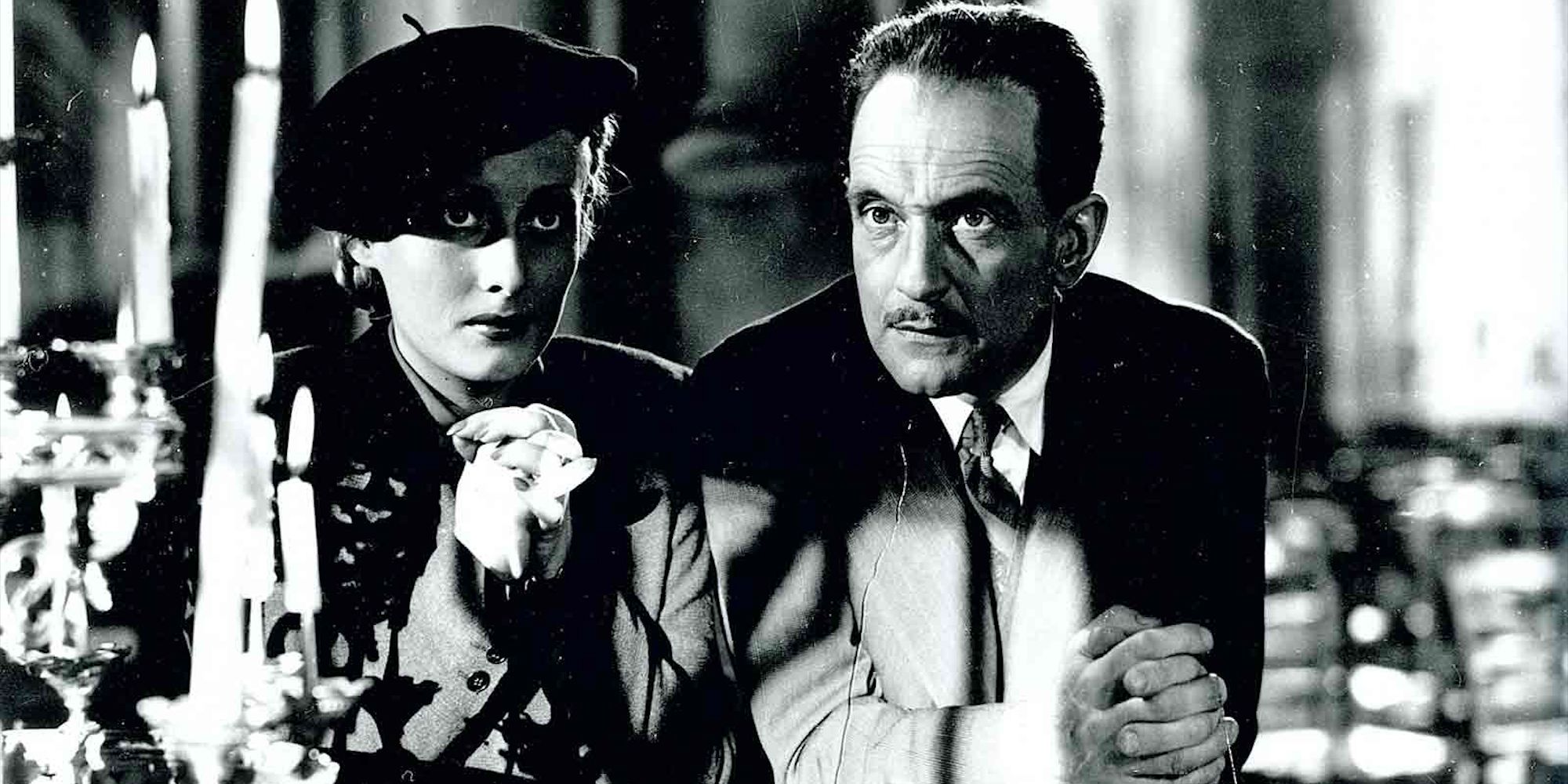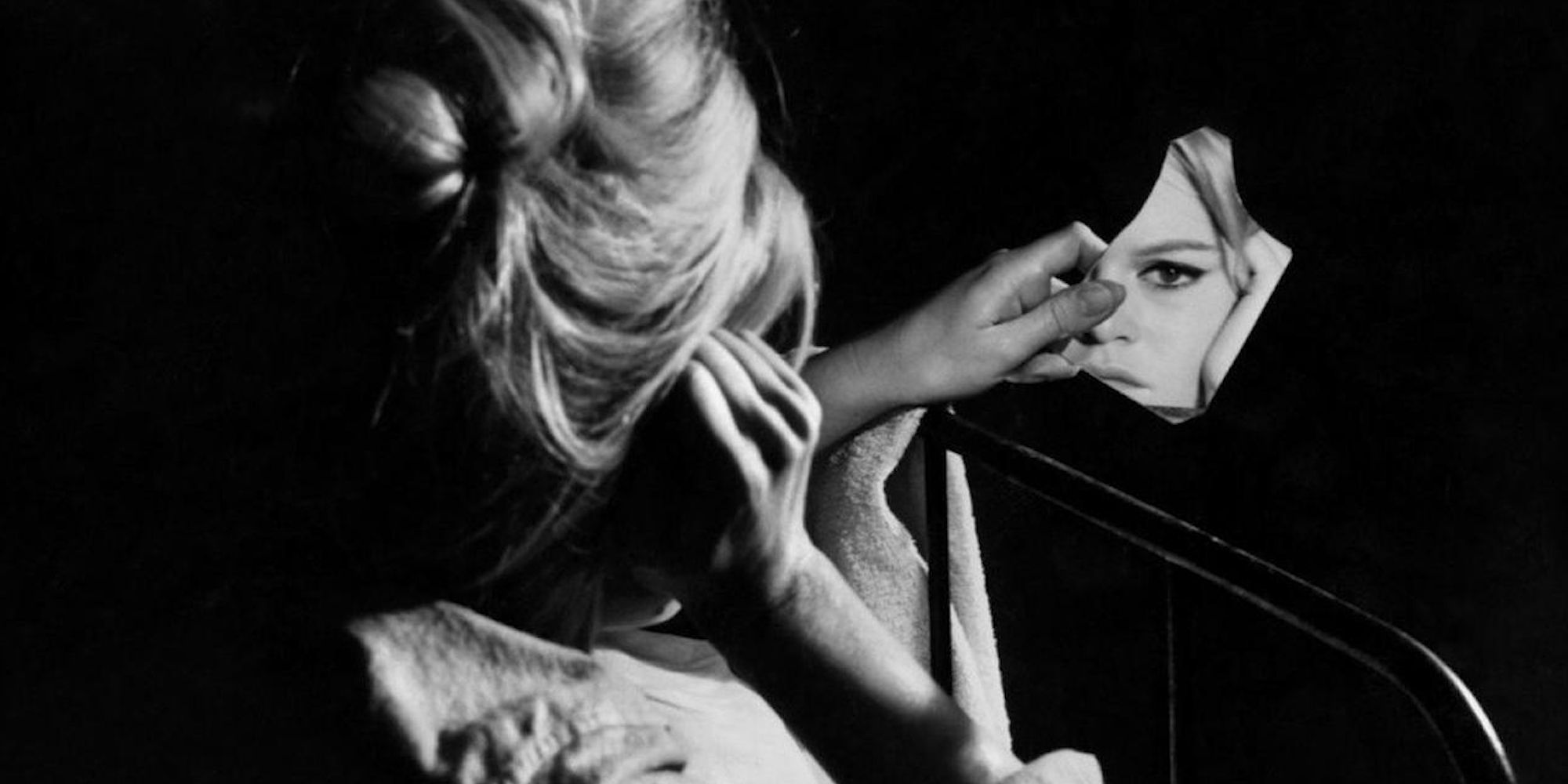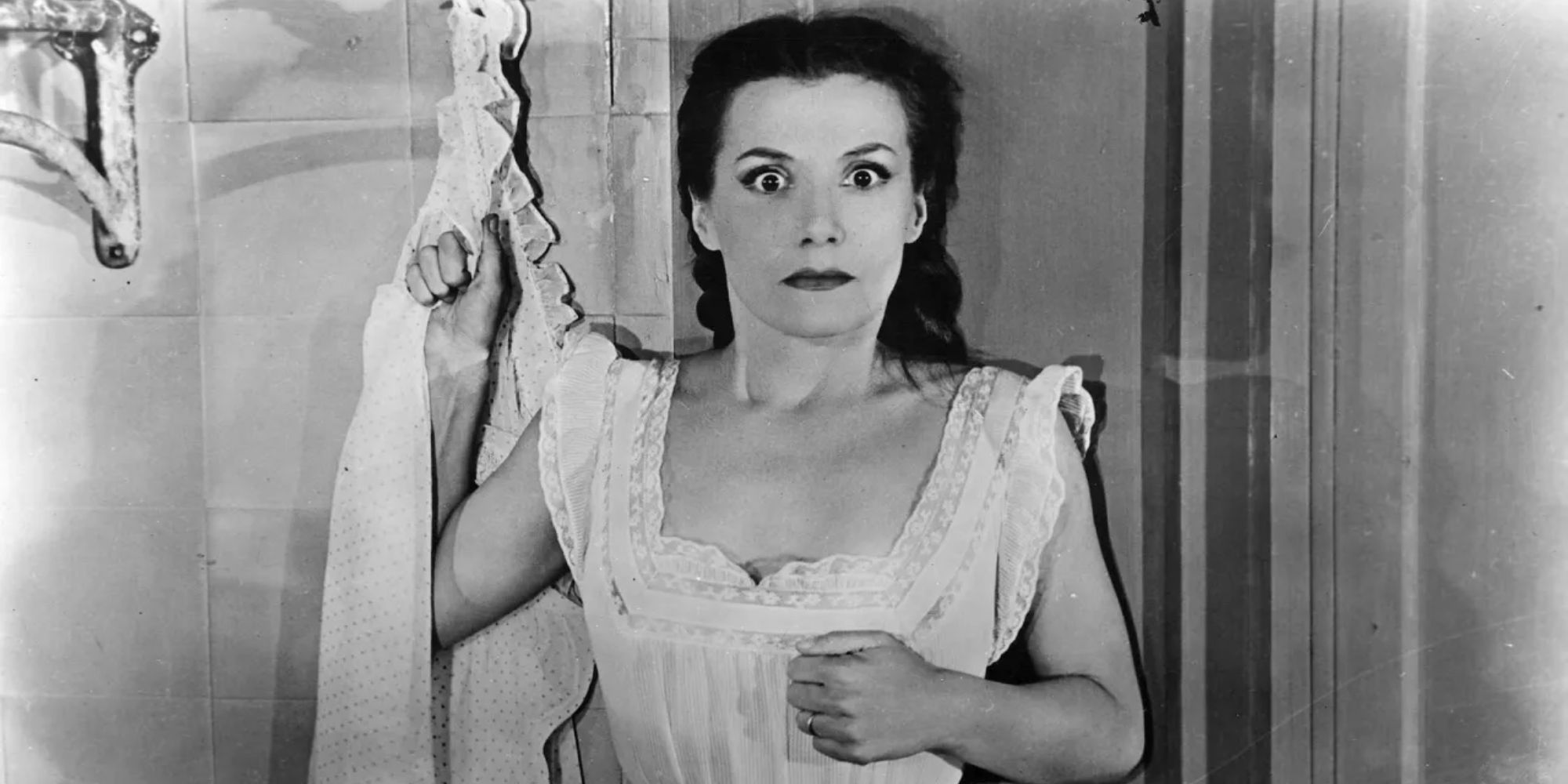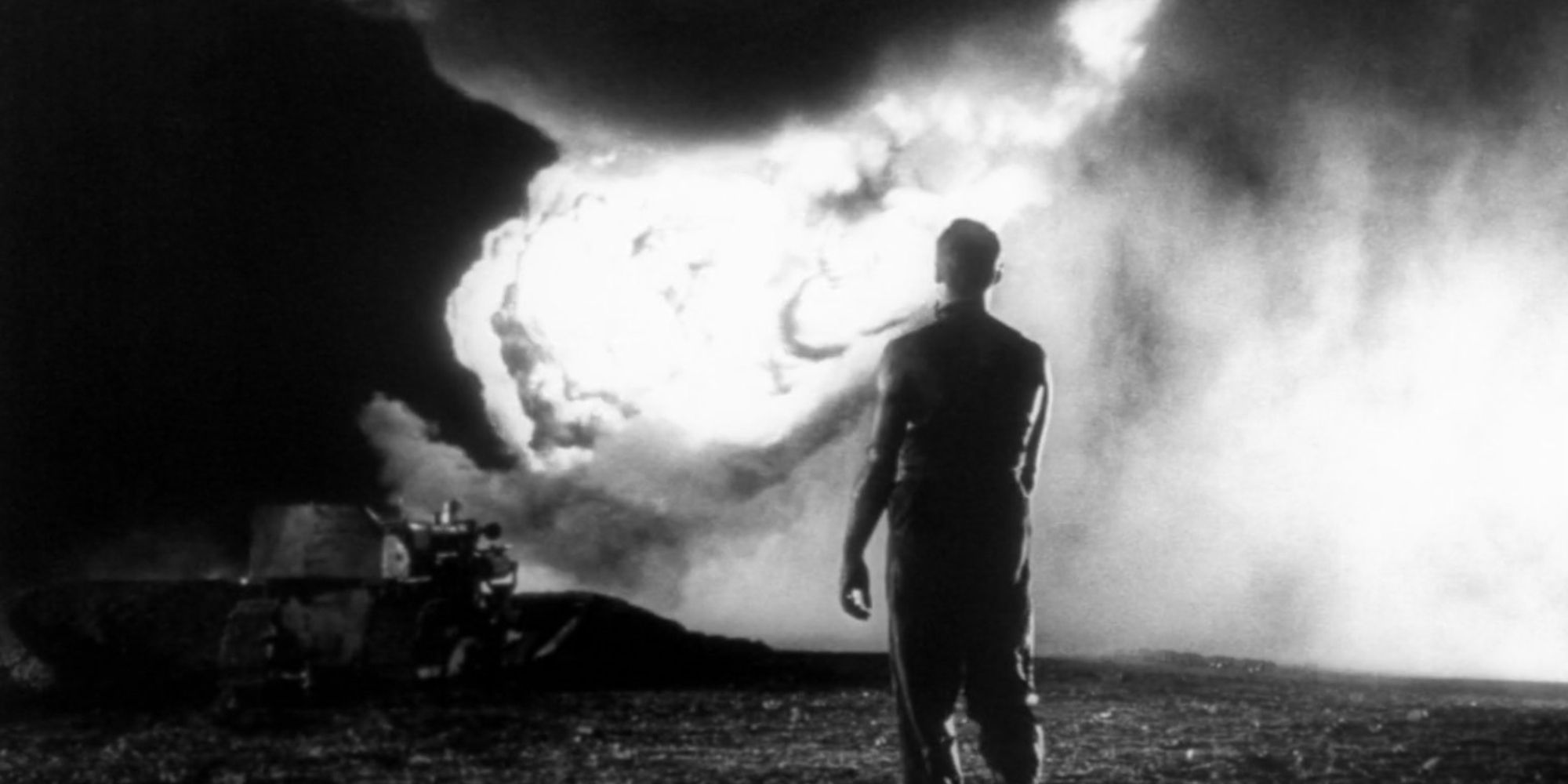Henri-Georges Clouzot, active between the 1940s and ’60s, was a director primarily of noir films and thrillers. His defining projects are Diabolique and The Wages of Fear, two of the best movies of the 1950s, while his groundbreaking documentary The Mystery of Picasso is also considered a classic. Clouzot’s talent for suspense and penchant for dark, violent stories earned him the nickname “the French Hitchcock“.
Clouzot once said: “For me, the great rule is to push the contrasts as far as they will go.” He was referring to his use of chiaroscuro and complementary light and shadow, but the statement could also apply to his treatment of themes and emotions. At their best, his films feature morally complex characters and provocative subject-matter, offering no easy answers. From comedies to the bleakest of thrillers, these are Clouzot’s finest projects, ranked.
10 ‘The Spies’
Year Released: 1957
The Spies (French title: Les Espions) is a Cold War espionage thriller that subverts and pokes fun at many of the genre conventions, although it’s not really a comedy. It centers on Malik (Gérard Séty), a doctor at a struggling psychiatric hospital. He is approached by a NATO intelligence operative and offered a large sum of money to shelter a Soviet scientist (Hugo Vogel) in the hospital incognito, posing as a patient. He reluctantly accepts but gets far more than he bargained for when the clinic is soon packed with spies pretending to be patients.
However, nothing is as it seems in Malik’s new world. Soon, lies pile upon lies, and Malik is in way over his head. The resulting movie falls short of its potential, but fans of classic spy movies should enjoy its taut construction and twisty plot. It’s also interesting in that it looks at the rivalry between the American and Soviet superpowers from a French perspective.
Editor’s Note: Not available for streaming or purchase.
9 ‘Manon’
Year Released: 1949
“Nothing is sordid when two people love each other.” With Manon, Clouzot takes a novel from the 18th century but updates the setting to World War II. Manon (Cécile Aubry) is a young French woman accused of collaborating with the Nazis during the occupation. Just before she is set to be punished, she is rescued by Robert Dégrieux (Michel Auclair), a Resistance member turned soldier. They begin a passionate romance, but hardship and obstacles follow them at every step.
To make ends meet, Manon is pimped out by Robert’s brother Leon (Serge Reggiani) on the streets of Paris. Eventually, after a tragedy, they are forced to flee to North Africa. In contrast to the thrillers Clouzot is most known for, Manon is a melodrama, a genre that is not particularly well-suited to his style. Nevertheless, there are a handful of striking scenes, like a march through a desert beneath threatening clouds, and Manon and Robert’s dramatic meeting in the bombed-out ruins of a church.
Watch on Amazon
8 ‘The Murderer Lives at Number 21’
Year Released: 1942
“Life has never been very kind to me. And when I say life, I mean people. People are evil, father.” This comedy thriller was Clouzot’s feature debut and its success significantly boosted his profile. Set in an apartment building, the film revolves around Inspector Wens (Pierre Fresnay), who goes undercover as a boarder to investigate a series of mysterious murders. The killer is believed to reside at Number 21, and as Wens interacts with the eccentric inhabitants of the building, he uncovers a web of secrets, suspicions, and humorous misunderstandings.
Each resident becomes a potential suspect, and the narrative keeps the audience guessing until the very end. Clouzot directed this film in France during the Nazi occupation, and it subtly mocks the Germans. For example, there’s a shot where a villain lowers his arm and almost appears to be doing a Nazi salute. These were bold inclusions, given that the movie was pored over by the German censors.
Watch on Criterion
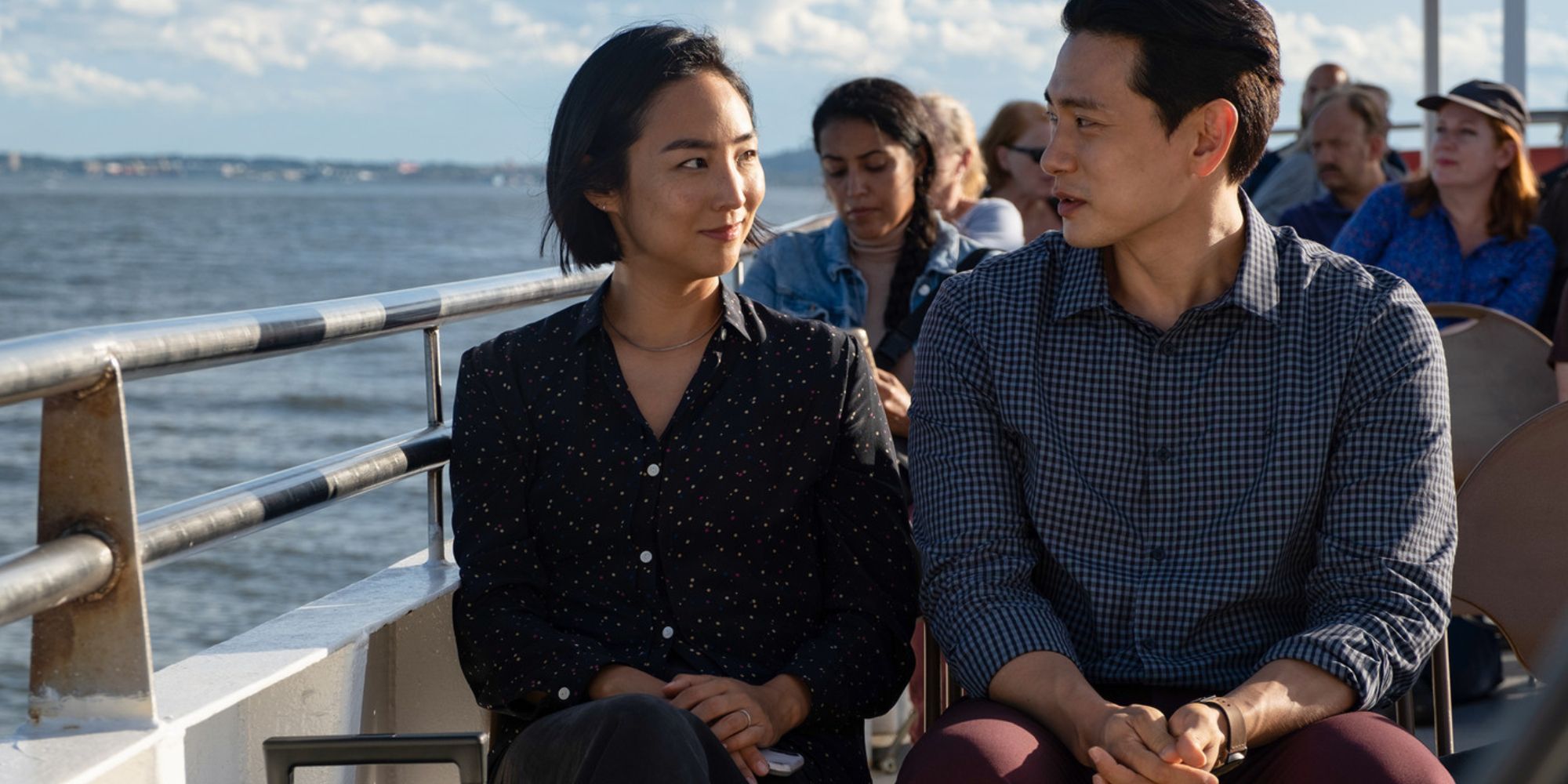
The 10 Best Foreign Language Movies of 2023, Ranked
Great movies come in many languages.
7 ‘Woman in Chains’
Year Released: 1968
“When you’re in love, nothing you do is dirty. When you’re not, everything is.” Woman in Chains (French title: La Prisonnière) is a psychological drama about art gallery owner Stanislas (Laurent Terzieff) and José (Élisabeth Wiene), who is in a relationship with Gilbert (Bernard Fresson), an experimental artist. An illicit affair begins between José and Stanislas, although she is soon intrigued and repulsed by the disturbing photographs he takes of women. Stanislas reveals himself to be creepy, even predatory, but José remains drawn to him.
Clouzot spins this premise into an exploration of artistic expression, obsession, and dark impulses. In this regard, it bears some similarities to other artistic thrillers of that era, like Peeping Tom and Blowup. Additionally, this was Clouzot’s final film and his only one in color. He makes striking use of it, serving up a quintessentially ’60s aesthetic that boasts some genuinely vivid imagery, including a memorable dream sequence.
Editor’s Note: Not available for streaming or purchase.
6 ‘The Mystery of Picasso’
Year Released: 1956
“I do not look for, I find!” This experimental documentary offers an extraordinary glimpse into the artistic process of one of the most celebrated painters of the 20th century, Pablo Picasso. The film captures Picasso creating his artwork in real time, employing a special technique that allows the audience to witness his paintings come to life stroke by stroke. He begins with simple black-and-white sketches but progresses to more complex compositions using collage and oil paint. He works on a special transparent canvas, allowing the camera to see everything.
The Mystery of Picasso would be intriguing enough simply as a time-lapse of Picasso’s work from beginning to completion, but halfway through, Clouzot turns the camera around and shows us the behind-the-scenes making of the documentary itself. Clouzot himself appears on-screen, as does cinematographer Claude Renoir (plus a shirtless Picasso). It makes for a very meta commentary on art and the creative process, which remains particularly beloved in France.
Watch on Criterion
5 ‘Jenny Lamour’
Year Released: 1947
Jenny Lamour (Suzy Delair) is a music hall performer aspiring to become a famous singer. When her jealous husband Maurice Martineau (Bernard Blier) finds out that she has been flirting with the businessman Brignon (Charles Dullin), Maurice threatens to kill the man. Soon after, Jenny pays a secret visit to Brignon’s apartment. When Brignon is later found dead, a police investigation begins. Naturally, Maurice is the prime suspect. Inspector Antoine (Louis Jouvet) is relentless in his mission to expose the truth, dredging up all kinds of secrets in the process.
Jenny Lamour (also known as Quai des Orfèvres) is essentially a noir musical, taking police procedural elements but setting them against a backdrop of dance halls in 1940s Paris. Star Delair does a lot of heavy lifting here, singing, dancing, and playing Jenny with surprising depth. In fact, all the lead characters are fleshed out and defy expectations. The movie is rated highly by modern critics, holding a 100% rating on Rotten Tomatoes.
Watch on Kanopy
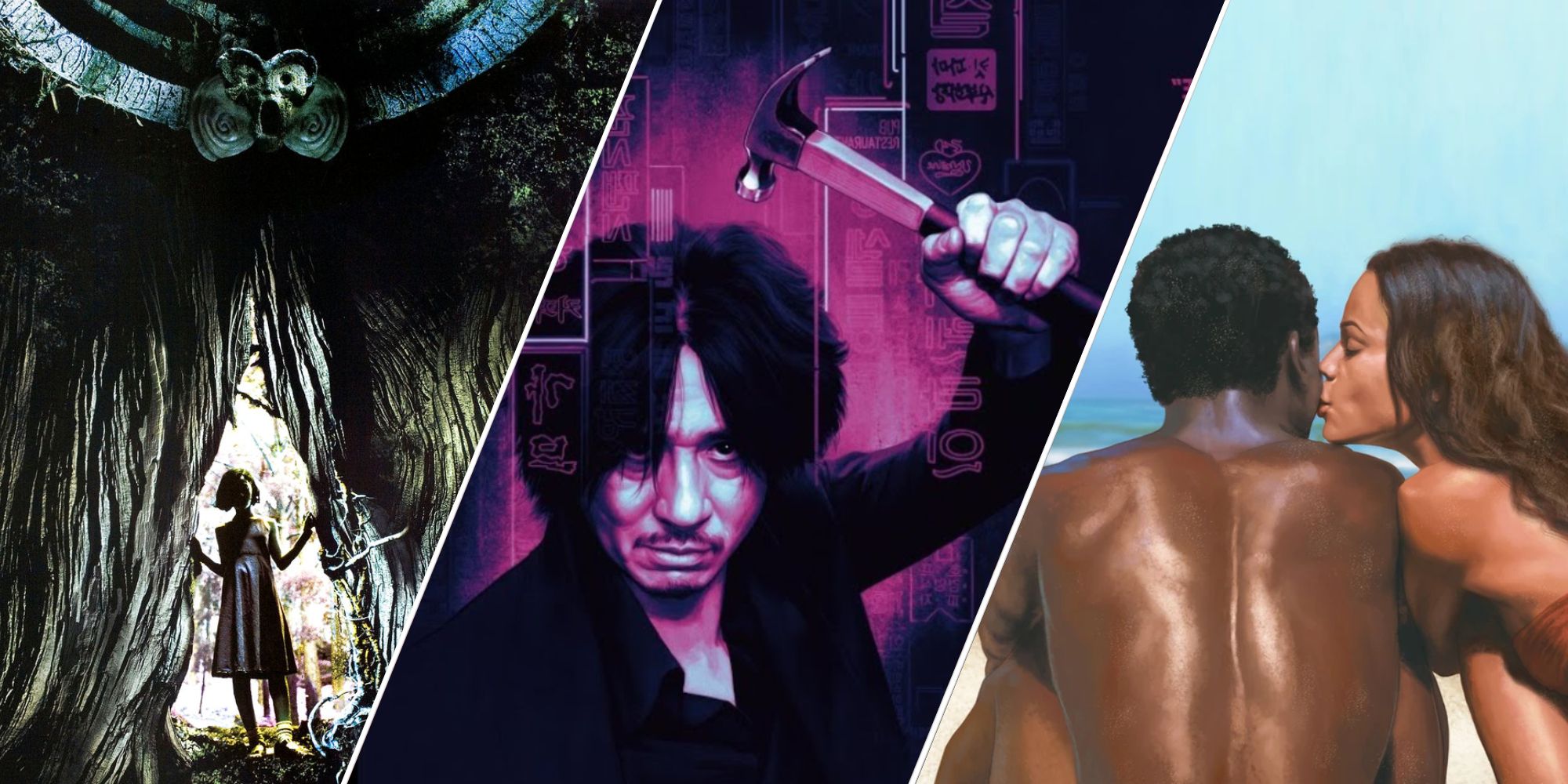
10 Foreign Movies That Won Big at the Oscars
You don’t need subtitles to understand how great these foreign films are.
4 ‘The Raven’
Year Released: 1943
“You think that good means light and bad means night? But where does night end and light begin?” The Raven (French title: Le corbeau) takes place in a small French town, where the residents receive libelous letters revealing supposed wrongdoing by the locals, including crimes and infidelities. These accusations totally destabilize this provincial community, escalating into rage and violence. Dr. Rémy Germain (Pierre Fresnay), a physician, finds himself at the center of the turmoil. The sender of the letters remains anonymous, going only by the pseudonym ‘The Raven’.
This is a killer premise, realized with stellar execution. The Raven was controversial upon its release due to its themes and the context of World War II-era France, angering both the left-wing Resistance publications and the Nazi-aligned Vichy government. In fact, it caused Clouzot to be banned from making movies for several years. Nevertheless, in the decades since, the film has earned acclaim for its compelling narrative, sharp social critique, and Clouzot’s assured direction.
Watch on Criterion
3 ‘The Truth’
Year Released: 1960
“You have no heart. One must be capable of love to judge love.” The Truth (French title: La Vérité) stars Brigitte Bardot as Dominique Marceau, a young and free-spirited woman accused of murdering her lover Gilbert (Sami Frey). In the courtroom, the lawyers duel about Dominique’s fate, and her entire life is placed under a microscope. The prosecution accuses Dominique of premeditated murder and scours her past relationships for evidence. At the same time, the movie pieces together her story through flashbacks.
Various witnesses come forward to provide testimony about Dominique and Gilbert’s relationship, but their conflicting accounts raise thorny questions about the nature of truth. One of Clouzot’s most polished projects, The Truth combines suspense and legal drama with rich character study and social commentary. There are some striking parallels between it and Justine Triet‘s Oscar-nominated Anatomy of a Fall, though Triet said she only watched Clouzot’s movie after her film was finished.
Buy On Amazon
2 ‘Diabolique’
Year Released: 1955
“Don’t you believe in hell?” Diabolique unfolds in a provincial boarding school where the tyrannical headmaster, Michel Delassalle (Paul Meurisse), abuses both his wife Christina (Véra Clouzot) and his mistress Nicole (Simone Signoret). Eventually, the two women have enough of this mistreatment and conspire together to murder Michel. They meticulously plan and execute the perfect crime, disposing of the body in a swimming pool and framing it as a drowning accident. They hit a snag, however, when Michel’s corpse disappears.
The film boasts a wealth of unsettling images and a delightfully unpredictable plot. The storyline has been endlessly imitated, especially the way a certain third-act development casts doubt on everything the viewer thought they knew. These elements caused a sensation on release and Diabolique quickly became canonized as a landmark entry in the development of horror cinema. A towering ’50s gem, it easily goes toe-to-toe with Hitchcock’s masterpieces and has aged remarkably well.
Watch on Criterion
1 ‘The Wages of Fear’
Year Released: 1953
“You don’t know what fear is. But you’ll see. It’s catching. It’s catching like smallpox. And once you get it, it’s for life.” Set in a grubby South American town, this thriller revolves around a group of desperate expats hired to transport nitroglycerin by truck across treacherous mountain roads. The chemical is highly explosive, meaning that even a small mistake could cost their lives. Drivers Mario (Yves Montand), Bimba (Peter van Eyck), Luigi (Folco Lulli), and Jo (Charles Vanel) set out on the perilous journey, beset by one obstacle after another. The stress quickly pushes them to the brink.
The Wages of Fear is an existential nightmare about people in the direst of circumstances. Most of all, it’s a masterclass in suspense (there’s a particularly hair-raising scene where a truck is maneuvered over a rickety wooden platform). Like George R. R. Martin, Clouzot is more than happy to visit grisly fates upon his protagonists, so the tension never lets up. As a result, The Wages of Fear eats most American thrillers from the early ’50s for breakfast. Not for nothing, it’s widely considered Clouzot’s masterwork. The movie is certainly worth checking out, provided your nerves can handle it.
Watch on Criterion


